CHEVROLET ASTRO 1997 2.G Owners Manual
Manufacturer: CHEVROLET, Model Year: 1997, Model line: ASTRO, Model: CHEVROLET ASTRO 1997 2.GPages: 404, PDF Size: 20.63 MB
Page 141 of 404
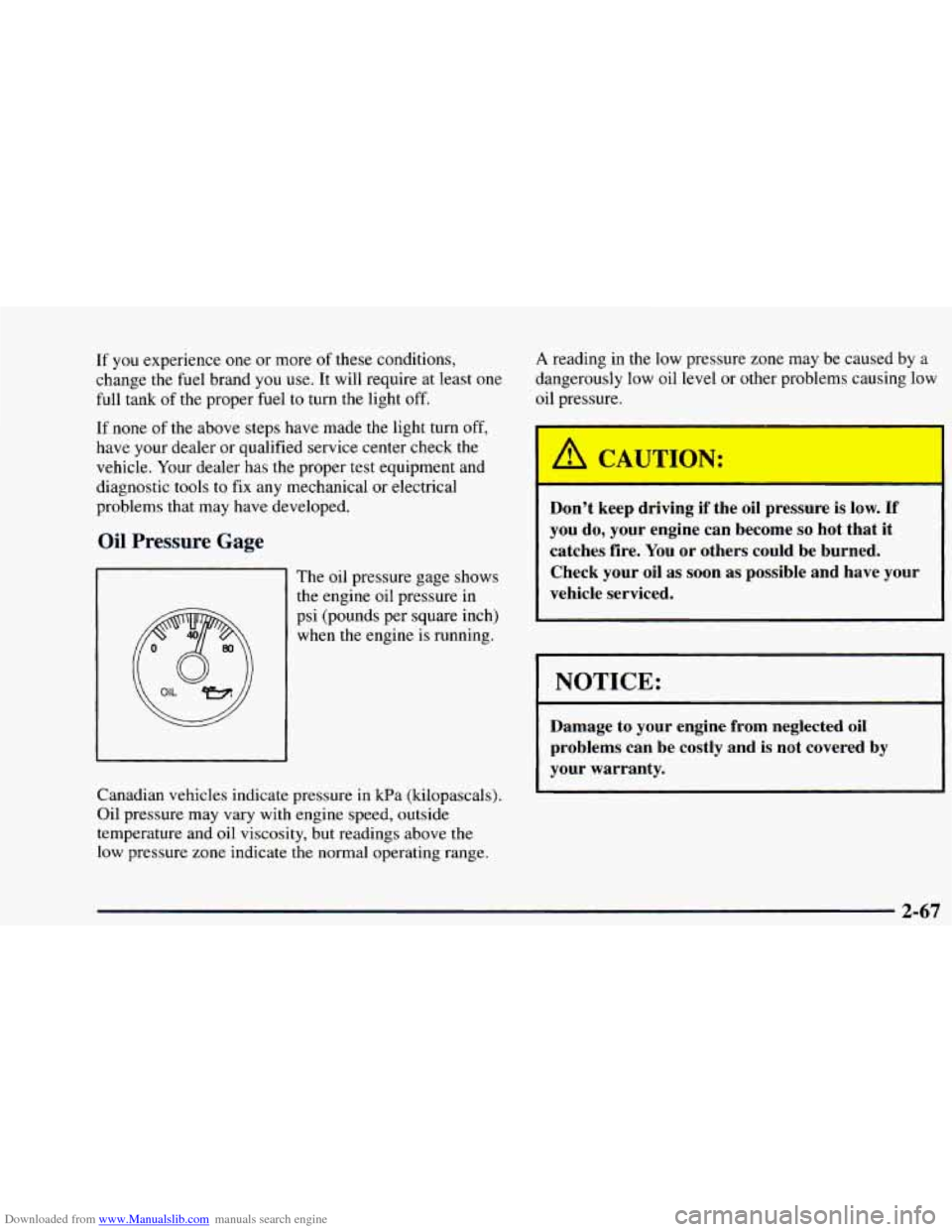
Downloaded from www.Manualslib.com manuals search engine If you experience one or more of these conditions,
change the
fuel brand you use. It will require at least one
full tank of the proper fuel to turn the light off.
If none of the above steps have made the light turn
off,
have your dealer or qualified service center check the
vehicle. Your dealer has the proper test equipment and
diagnostic tools
to fix any mechanical or electrical
problems that may have developed.
Oil Pressure Gage
The oil pressure gage shows
the engine oil pressure in
psi (pounds per square inch)
when the engine is running.
Canadian vehicles indicate pressure in kPa (kilopascals).
Oil pressure may vary with engine speed, outside
temperature and oil viscosity, but readings above the
low pressure zone indicate the normal operating range.
A reading in the low pressure zone may be caused by a
dangerously low oil level or other problems causing low
oil pressure.
I
Don’t keep driving if the oil pressure is low. If
you do, your engine can become so hot that it
catches fire.
You or others could be burned.
Check your oil
as soon as possible and have your
vehicle serviced.
1
NOTICE:
Damage to your engine from neglected oil
problems can be costly and is not covered by
your warranty.
2-67
Page 142 of 404
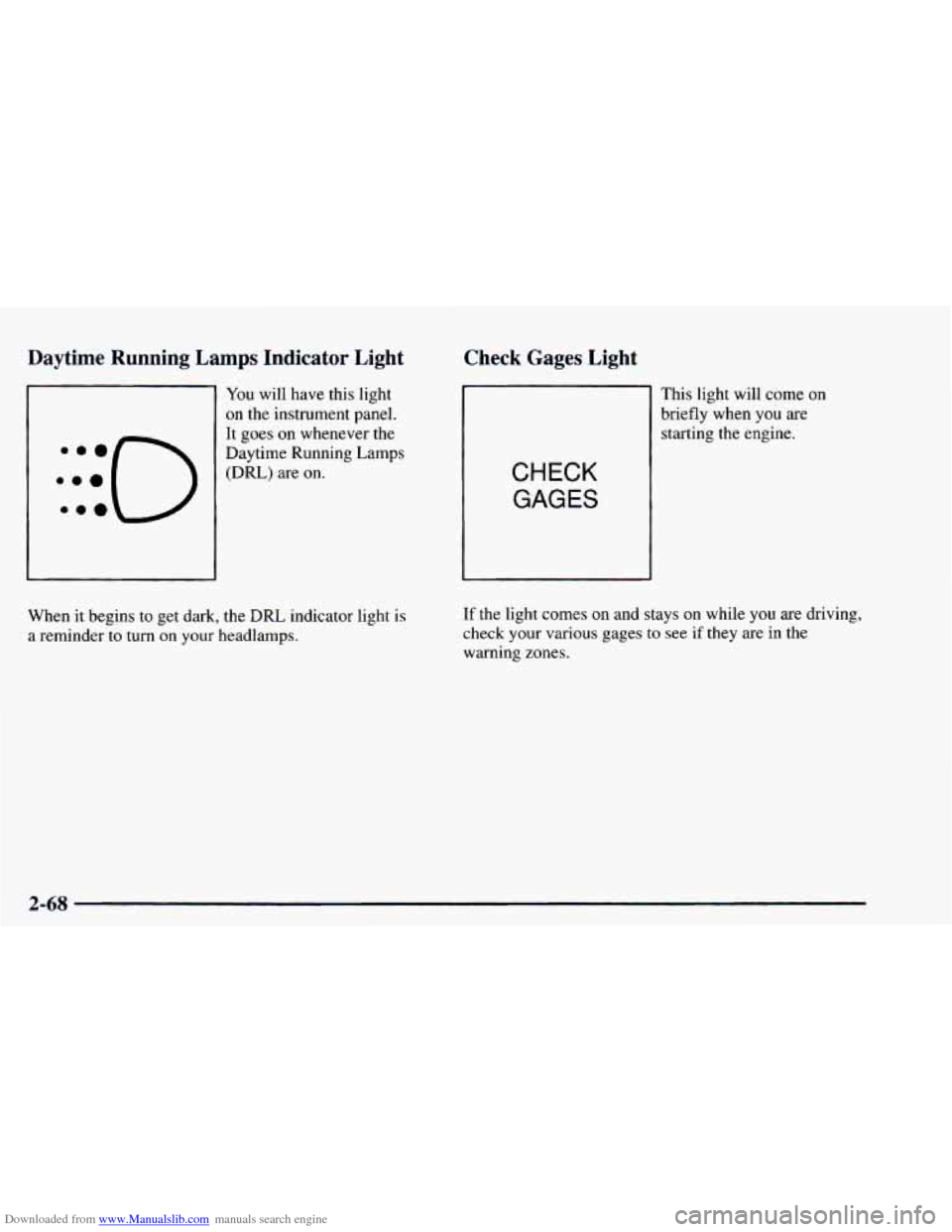
Downloaded from www.Manualslib.com manuals search engine Daytime Running Lamps Indicator L' -'-
I
:::O e..
You will have this light
on the instrument panel.
It goes on whenever the
Daytime Running Lamps (DRL) are on.
--k -- * Gages Light
This light will come on
briefly when you are
starting the engine.
CHECK
GAGES
When it begins to get dark, the DRL indicator light is
a reminder to turn on your headlamps.
If the light comes on and stays on while you are driving,
check your
various gages to see if they are in the
warning zones.
2-68
Page 143 of 404
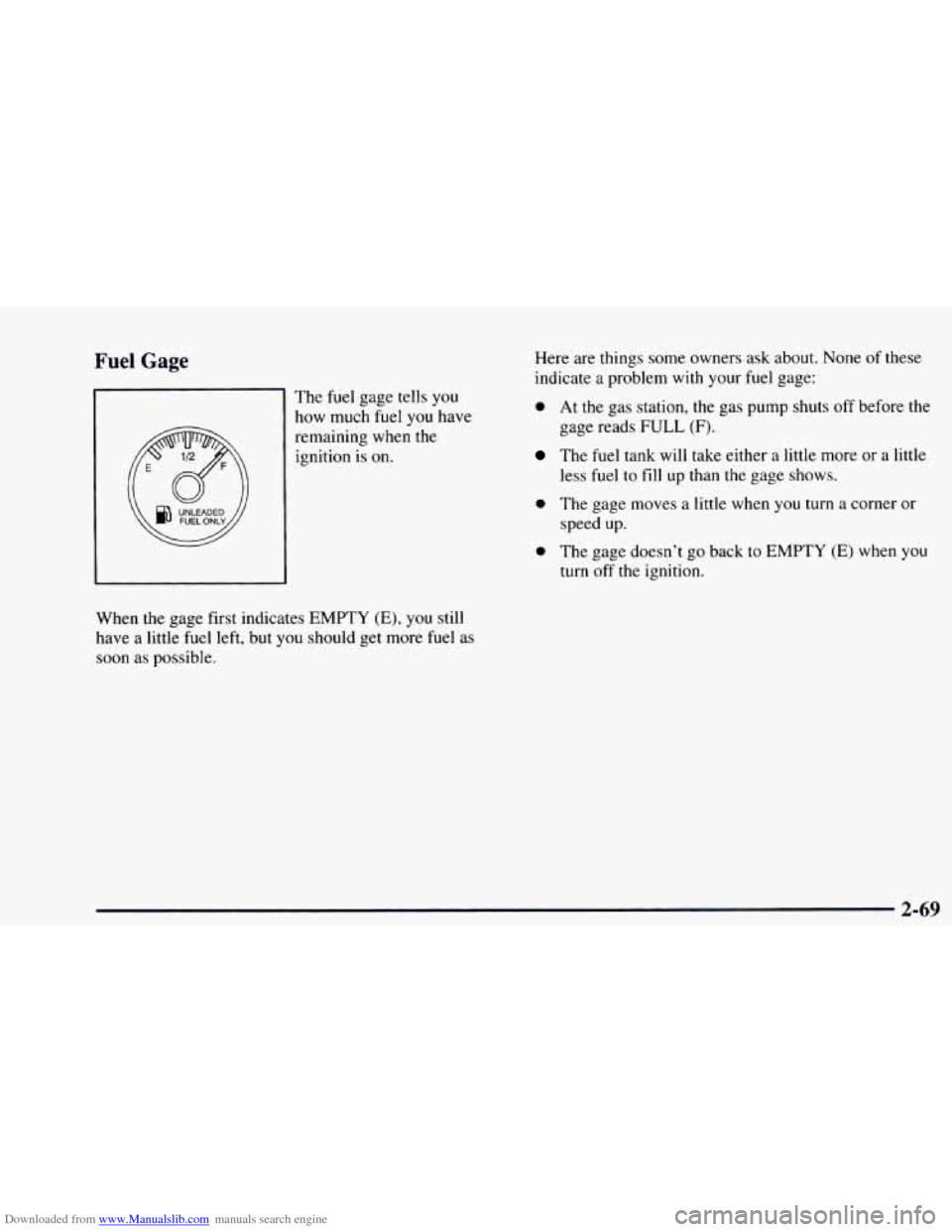
Downloaded from www.Manualslib.com manuals search engine Fuel Gage
The fuel gage tells you
how much fuel you have
remaining when the ignition is
on.
When the gage first indicates EMPTY (E), you still
have a little fuel left, but
you should get more fuel as
soon
as possible. Here
are things some owners ask about. None
of these
indicate
a problem with your fuel gage:
0 At the gas station, the gas pump shuts off before the
gage reads
FULL (F).
The fuel tank will take either a little more or a little
less
fuel to fill up than the gage shows.
speed up.
0 The gage moves a little when you turn a corner or
0 The gage doesn’t go back to EMPTY (E) when you
turn off the ignition.
2-69
Page 144 of 404
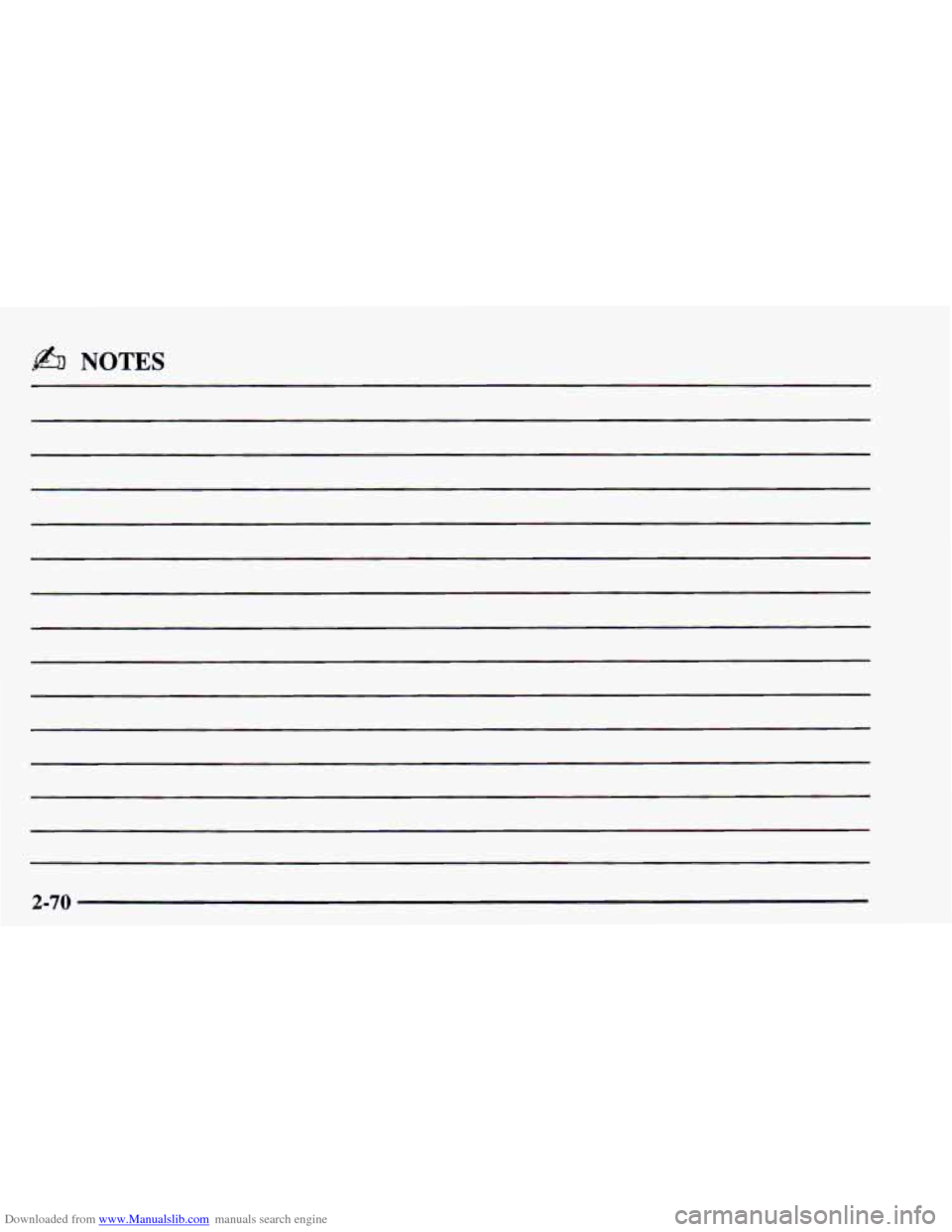
Downloaded from www.Manualslib.com manuals search engine b% NOTES
2-70
Page 145 of 404
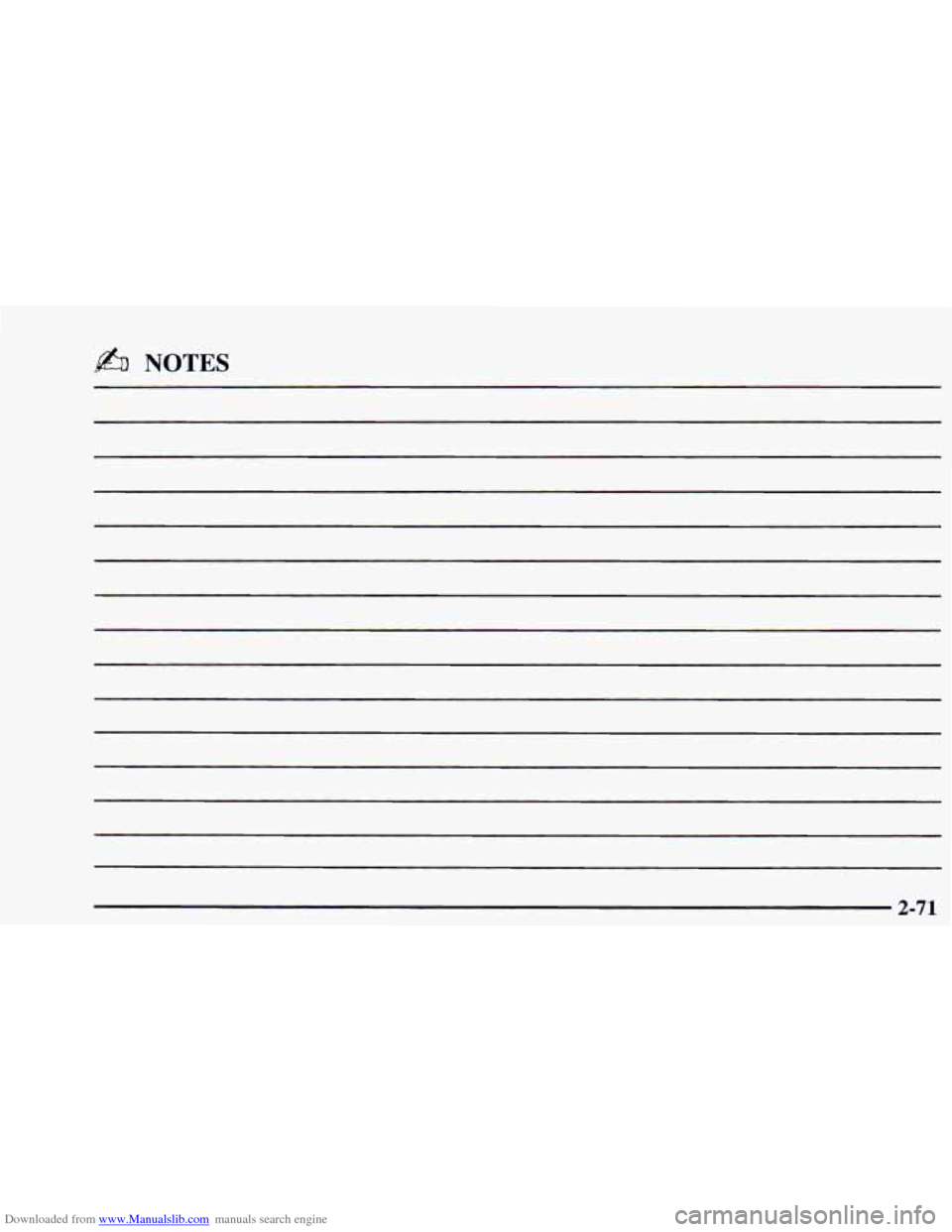
Downloaded from www.Manualslib.com manuals search engine 4%) NOTES
2-71
Page 146 of 404
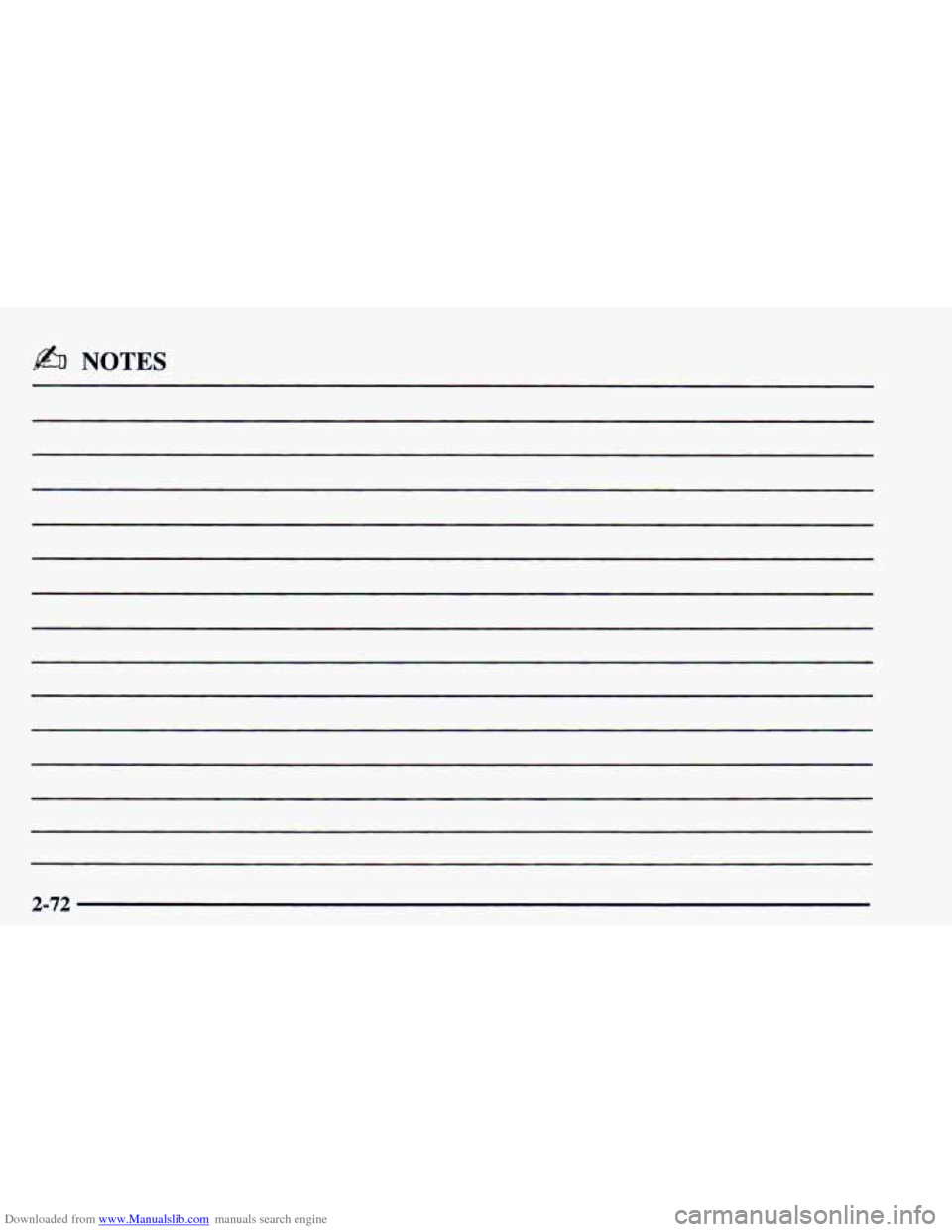
Downloaded from www.Manualslib.com manuals search engine b% NOTES
2-72
Page 147 of 404
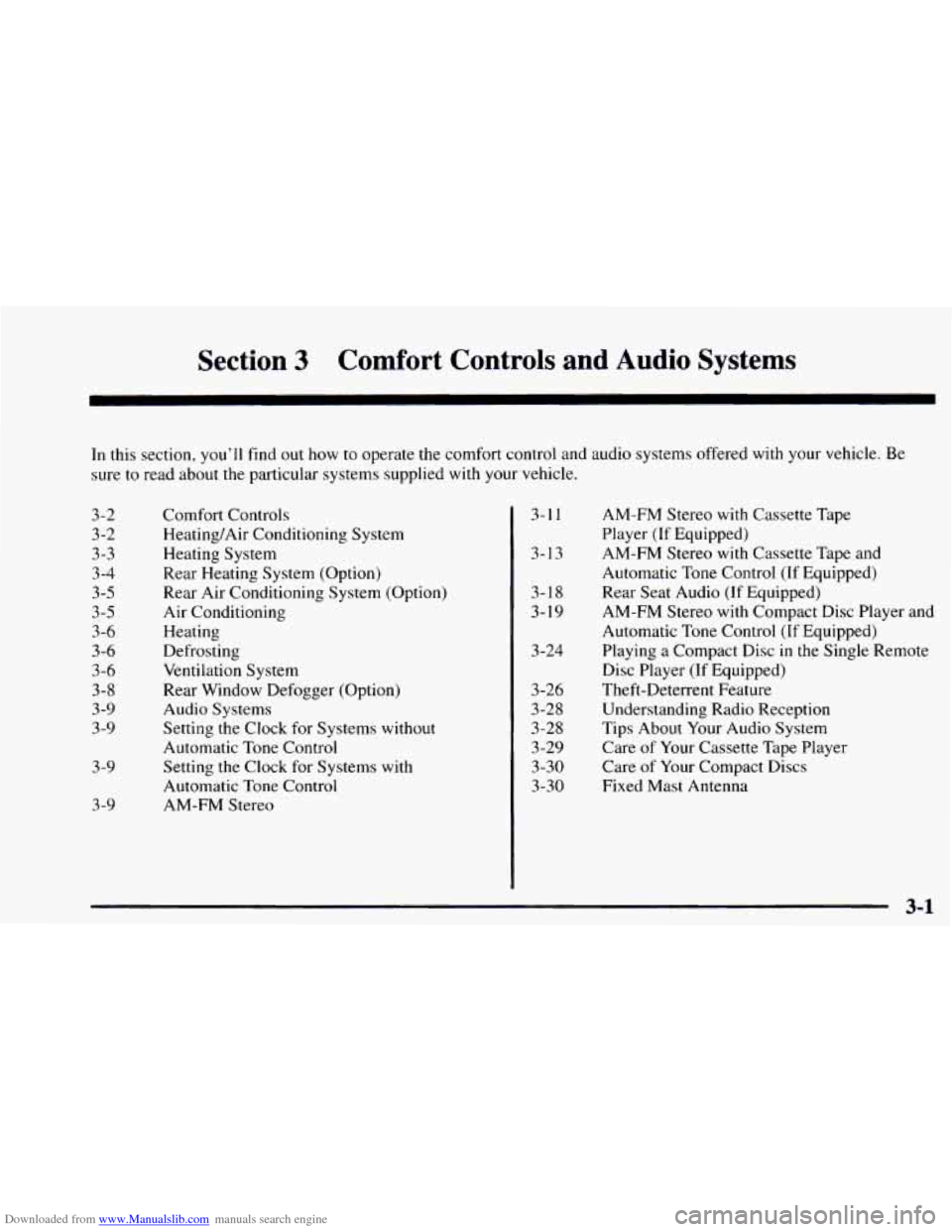
Downloaded from www.Manualslib.com manuals search engine Section 3 Comfort Controls and Audio Systems
In this section, you’ll find out how to operate the comfort control and audio systems offered with your vehicle. Be
sure to read about
the particular systems supplied with your vehicle.
3-2 3-2
3-3 3
-4
3 -5
3-5
3-6
3-6
3-6 3-8
3-9
3-9
3-9
3 -9 Comfort Controls
Heating/Air Conditioning System
Heating System
Rear Heating System (Option) Rear Air Conditioning System (Option)
Air Conditioning
Heating
Defrosting
Ventilation System
Rear Window Defogger (Option)
Audio Systems
Setting the Clock for Systems without
Automatic Tone Control
Setting the Clock for Systems
with
Automatic Tone Control
AM-FM Stereo 3-1
1
3-13
3-18
3-19
3-24
3-26
3-28
3-28
3-29
3-30
3-30
AM-FM Stereo with Cassette Tape
Player
(If Equipped)
AM-FM Stereo with Cassette Tape and
Automatic Tone Control
(If Equipped)
Rear Seat Audio
(If Equipped)
AM-FM Stereo
with Compact Disc Player and
Automatic Tone Control (If Equipped)
Playing a Compact Disc
in the Single Remote
Disc Player
(If Equipped)
Theft-Deterrent Feature Understanding Radio Reception
Tips About Your Audio System
Care
of Your Cassette Tape Player
Care
of Your Compact Discs
Fixed Mast Antenna
3-1
Page 148 of 404
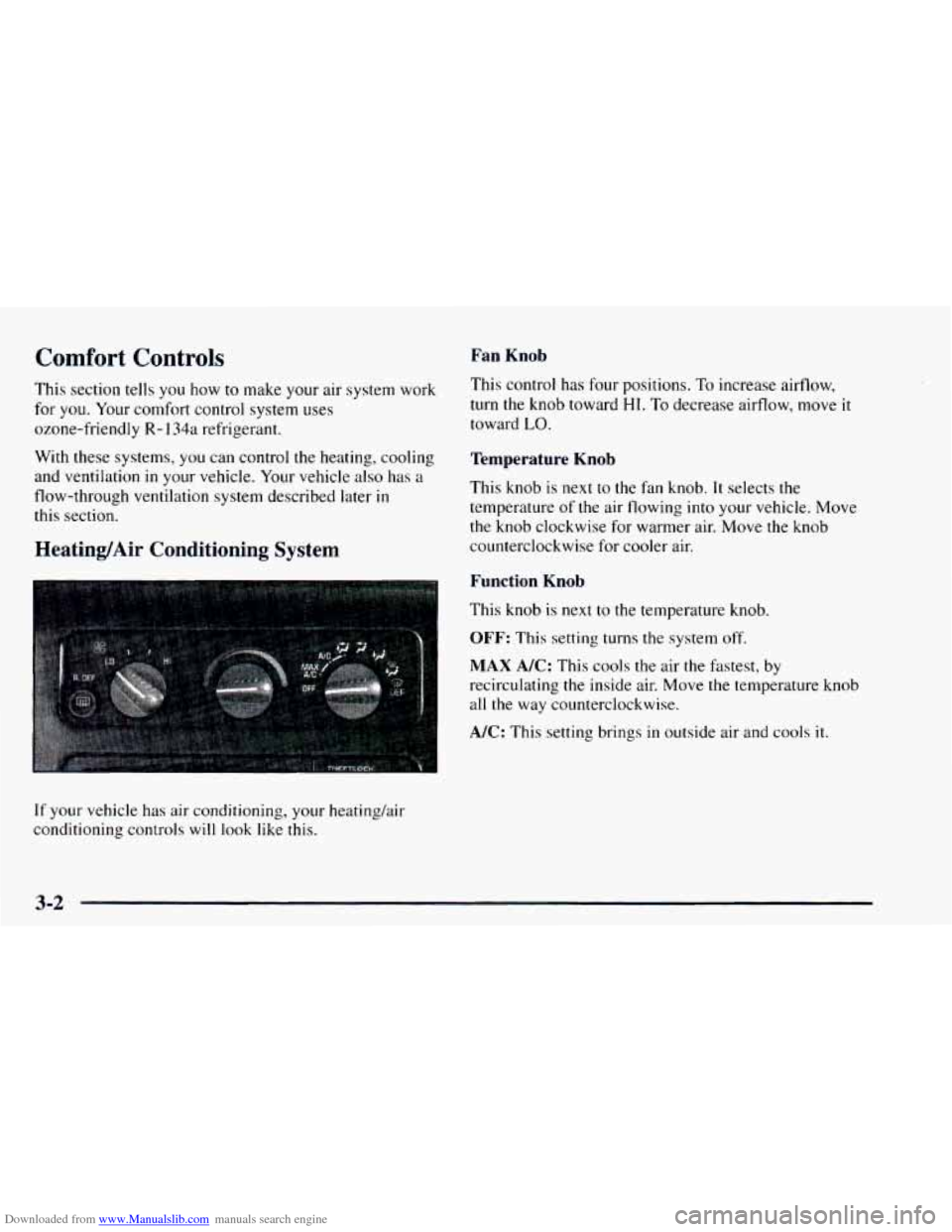
Downloaded from www.Manualslib.com manuals search engine Comfort Controls
This section tells you how to make your air system work
for you. Your comfort control system uses
ozone-friendly
R- 134a refrigerant.
With these systems, you can control the heating, cooling
and ventilation
in your vehicle. Your vehicle also has a
flow-through ventilation system described later
in
this section.
Heating/Air Conditioning System
If your vehicle has air conditioning, your heatinghir
conditioning controls will
look like this.
Fan Knob
This control has four positions. To increase airflow,
turn the knob toward
HI. To decrease airflow, move it
toward LO.
Temperature Knob
This knob is next to the fan knob. It selects the
temperature
of the air flowing into your vehicle. Move
the knob clockwise for warmer air. Move the knob
counterclockwise for cooler air.
Function Knob
This knob is next to the temperature knob.
OFF: This setting turns the system off.
MAX A/C: This cools the air the fastest, by
recirculating the inside air. Move the temperature knob
all the way counterclockwise.
A/C: This setting brings in outside air and cools it.
3-2
Page 149 of 404
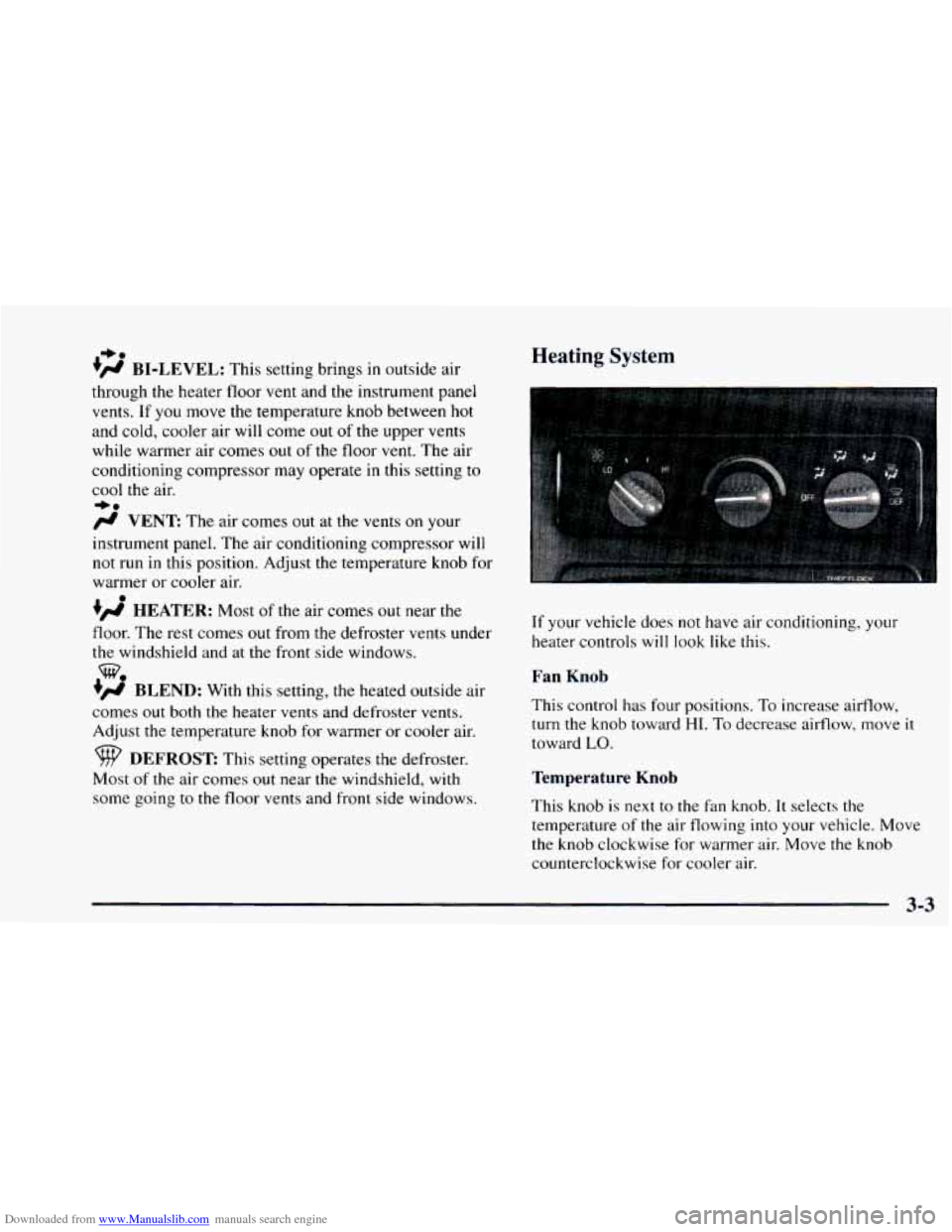
Downloaded from www.Manualslib.com manuals search engine +.
+# BI-LEVEL: This setting brings in outside air Heating System
through the heater floor vent and the instrument panel
vents. If
you move the temperature knob between hot
and cold, cooler air will come out of the upper vents
while warmer air comes out
of the floor vent. The air
conditioning compressor may operate in this setting
to
cool the air.
+e
/J VENT: The air comes out at the vents on your
instrument panel. The air conditioning compressor will
not run in this position. Adjust the temperature knob for
warmer or cooler air.
+’ HEATER: Most of the air comes out near the
floor. The rest comes
out from the defroster vents under
the windshield and at the front side windows.
we
+’ BLEND: With this setting, the heated outside air
comes out both
the heater vents and defroster vents.
Adjust the temperature knob for warmer or cooler air.
0
DEFROST This setting operates the defroster.
Most
of the air comes out near the windshield, with
some going to the floor vents and front side windows.
If your vehicle does not have air conditioning, your
heater controls will
look like this.
Fan Knob
This control has four positions. To increase airflow,
turn the knob toward
HI. To decrease airflow, move it
toward LO.
Temperature Knob
This knob is next to the fan knob. It selects the
temperature of the air flowing into your vehicle. Move
the knob clockwise for warmer air. Move the knob
counterclockwise
for cooler air.
3-3
Page 150 of 404
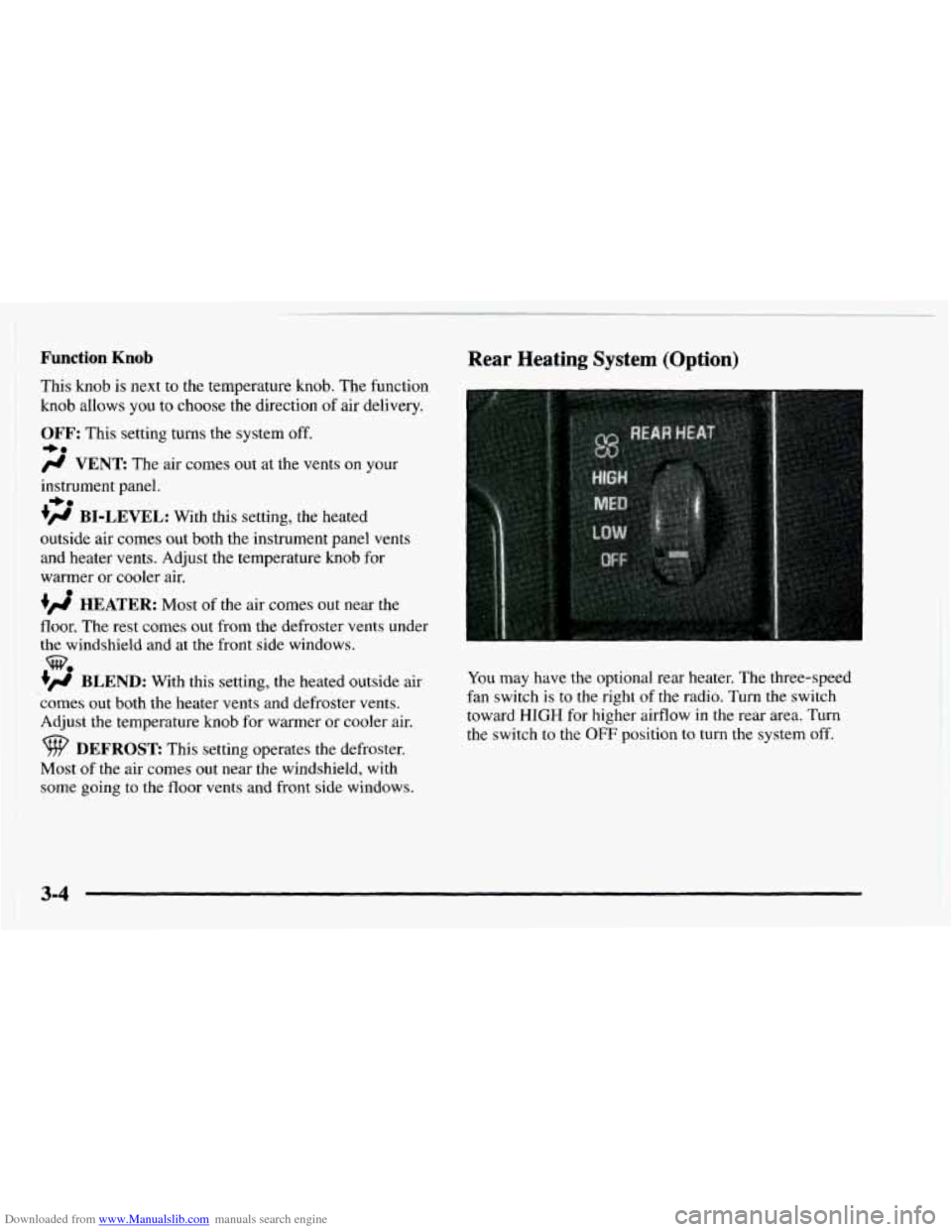
Downloaded from www.Manualslib.com manuals search engine Function Knob
This knob is next to the temperature knob. The function
knob allows you to choose the direction of air delivery.
OFF: This setting turns the system off.
/J VENT The air comes out at the vents on your
-0
instrument panel.
+fl BI-LEVEL: With this setting, the heated
-bo
outside air comes out both the instrument panel vents
and heater vents. Adjust the temperature knob for
warmer or cooler air.
4’ HEATER: Most of the air comes out near the
floor. The rest comes out from the defroster vents under
the windshield and at the front side windows.
+# BLEND: With this setting, the heated outside air
comes out both the heater vents and defroster vents.
Adjust the temperature knob for warmer or cooler air.
9 DEFROST This setting operates the defroster.
Most of the air comes
out near the windshield, with
some going
to the floor vents and front side windows.
@70
Rear Heating System (Option)
You may have the optional rear heater. The three-speed
fan switch is
to the right of the radio. Turn the switch
toward
HIGH for higher airflow in the rear area. Turn
the switch to the
OFF position to turn the system off.
3-4